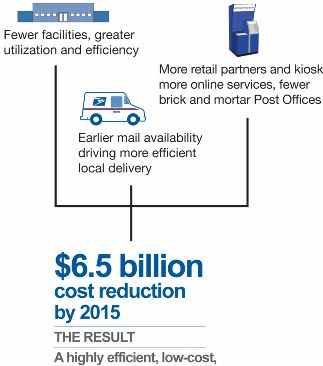The Postal Service is aggressively working to make our delivery operations more effective through route adjustments and by separating delivery functions from Post Office operations. In FY2011, the Postal Service was able to reduce its total number of city and rural delivery routes nationally by 6,878 and delivery workhours by nearly 8.3 million.
Two delivery operations initiatives contributed to the majority of these route reductions: implementing the Flats Sequencing System (FSS), and route evaluations of about 70,000 city delivery routes in non-FSS delivery facilities. During FY2011, FSS was implemented in approximately 1,000 delivery units.
Sequencing mail saved more carrier office time while route evaluations reduced base workhours and routes. These initiatives, along with others, enabled the Postal Service to also absorb 636,530 combined new deliveries, while making delivery operations more efficient. Since FSS implementation and the route review process were ongoing during the year, workhours and dollar savings will be spread over FY2011 and FY2012.
USPS is studying transition for First-Class Mail from a 1–2 day delivery service standard to a 2–3 day standard, which will make our delivery operations even more efficient. Mail and package delivery will be more centralized, technology can be used more effectively, delivery will occur earlier in the day and mail carriers will spend a greater part of their workday delivering mail instead of sorting it.

In the past four years, we have lowered annual costs by reducing the size of our work force by 127,500 career employees, while keeping service performance standards at record high levels.
